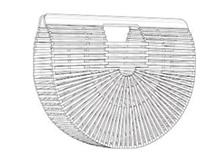The US Court of Appeals for the Eighth Circuit affirmed a district court’s ruling that a plaintiff failed to establish copyright protection for its software platforms, drawing a distinction between “literal” copying (direct duplication of source code) and “nonliteral” copying (reproduction of structure, sequence, or user interface). InfoDeli, LLC v. Western Robidoux, Inc., et al., Case No. 20-2146 (8th Cir. May 5, 2025) (Gruender, Kelly, Grasz, JJ.)
InfoDeli partnered with Western Robidoux, Inc. (WRI), a commercial printing and fulfillment firm co-owned by family members, in 2009 to form a joint venture. The agreement leveraged InfoDeli’s expertise in developing custom webstore platforms and WRI’s capacity for printing and fulfillment. Their collaboration served major clients such as Boehringer Ingelheim Vetmedica Inc. (BIVI) and CEVA Animal Health, LLC, both providers of animal health products. InfoDeli built webstores enabling the companies’ sales teams to order promotional materials, which WRI then fulfilled. InfoDeli developed the Vectra Rebate platform for CEVA, allowing marketing staff to issue customer coupons that were also fulfilled by WRI.
By early 2014, tensions emerged. Without informing InfoDeli, WRI hired a competitor, Engage Mobile Solutions, to replace InfoDeli’s platforms for CEVA and BIVI. Engage used open-source software, in contrast to InfoDeli’s proprietary systems. WRI also shared InfoDeli-developed content with Engage to aid the transition. Shortly thereafter, WRI abruptly terminated its joint venture with InfoDeli.
InfoDeli sued WRI, CEVA, BIVI, and Engage for copyright infringement, tortious interference, and violations of the Missouri Computer Tampering Act related to certain webstores. The defendants counterclaimed conversion and tortious interference. The district court ruled in favor of the defendants on the copyright claims and denied InfoDeli’s motion on the counterclaims. After a jury sided with the defendants, InfoDeli filed motions for judgment and a new trial, both of which were denied. InfoDeli appealed.
The Eighth Circuit found that InfoDeli failed to prove its platforms were protected by copyright. The Court distinguished between “literal” and “nonliteral” copying, explaining that literal copying referred to direct duplication of original source code while nonliteral copying involved reproducing the overall structure or user interface. The district court had already determined that the nonliteral elements of InfoDeli’s platforms were not copyrightable. On appeal, InfoDeli did not challenge this determination regarding the individual elements. Instead, InfoDeli argued that the platforms should be protected “as a whole,” claiming that the interrelationship of elements made them protectable. However, the Eighth Circuit found that InfoDeli did not explain how the elements’ arrangement exhibited the required creativity for copyright protection.
InfoDeli further argued that the district court erred in not considering the verbatim copying of its source code. However, since InfoDeli’s complaint only alleged infringement of nonliteral elements, the Eighth Circuit found that the district court properly focused on those claims.
InfoDeli also argued that the district court erred by relying on InfoDeli’s expert’s list of protectable elements for the BIVI platform. However, the Court rejected this claim, pointing to precedent holding that when a plaintiff identifies specific elements as protectable, it effectively concedes that the remaining elements [...]
Continue Reading
read more

 Subscribe
Subscribe



